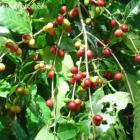Haitian Cuisine and Food
Haitian food or Manje Ayisien which is regularly cooked in Haiti is synonymous to many as creole cooking. But in fact, this style of cuisine has origin in several other culinary styles and gained influence of various ethnic groups namely French, African, Middle Eastern and Taíno people. Tainos were the indigenous peoples of the Bahamas, Greater Antilles, and the northern Lesser Antilles who were once one of the Arawak peoples of South America. Although Haitian cuisine is similar to the styles of other Spanish and French speaking people in the countries of Antilles but it differs on many counts on its uniqueness from its regional counterparts. Haitian foods use more vegetables, rice and corn meal. They are fond of peppers or similar herbs and prefer strengthening flavor. Haitian foods are moderately spiced, seasoned liberally; they are neither mild nor too hot. Years of migration (for example, Latin American who came from Arab) have lead to adaptation that have merged in this style of cooking.
The most favorite chicken (poul) dish is prepared with boiled chicken marinated in sour orange, lemon juice, garlic, scotch bonnet pepper and other seasonings. The marinated chicken is fried crispy before serving. 'Legim' is a thick vegetable stew that consists smashed mixture of cabbage, eggplant, spinach, watercress plant, chayote with other seasonal vegetables as per cook's preference.
Spaghetti is a common breakfast in Haiti which is cooked with dried herrings, hot dogs and spices. It is served with ketchup. Tchaka, an offering to the lwa in Voodou is often eaten as a healthy stew consisting meat or pork, pumpkin (joumou), hominy and beans. Many popular regional dishes exist in Haiti like, streamed breadfruit mashed in pilon 'Tonmtonm' from Jeremie or chicken with cashew nut "poul ak nwa" from the places around Cap-Haitien.
Haitian cuisine reflects their rich and diverse history and has true ability to scintillate the palate.

 Korekafe to unlock mysteries of Haitian coffee
Korekafe to unlock mysteries of Haitian coffee
 Self-Driving Autos to Increase Economic Growth
Self-Driving Autos to Increase Economic Growth
 Brasserie Nationale d'Haïti S.A (Brana) new image for Prestige...
Brasserie Nationale d'Haïti S.A (Brana) new image for Prestige...
 Why wasn't Jean Bertrand Aristide Present in Gonaives?
Why wasn't Jean Bertrand Aristide Present in Gonaives?
 Famous Brazilian singer Nelson Ned, passed away
Famous Brazilian singer Nelson Ned, passed away
 Something to think about
Something to think about
 Newsletter
Newsletter
 Informative Marketing and Advertising in the Haitian Community
Informative Marketing and Advertising in the Haitian Community
 Haitian Thanksgiving
Haitian Thanksgiving
 La Chapelle, Haiti
La Chapelle, Haiti